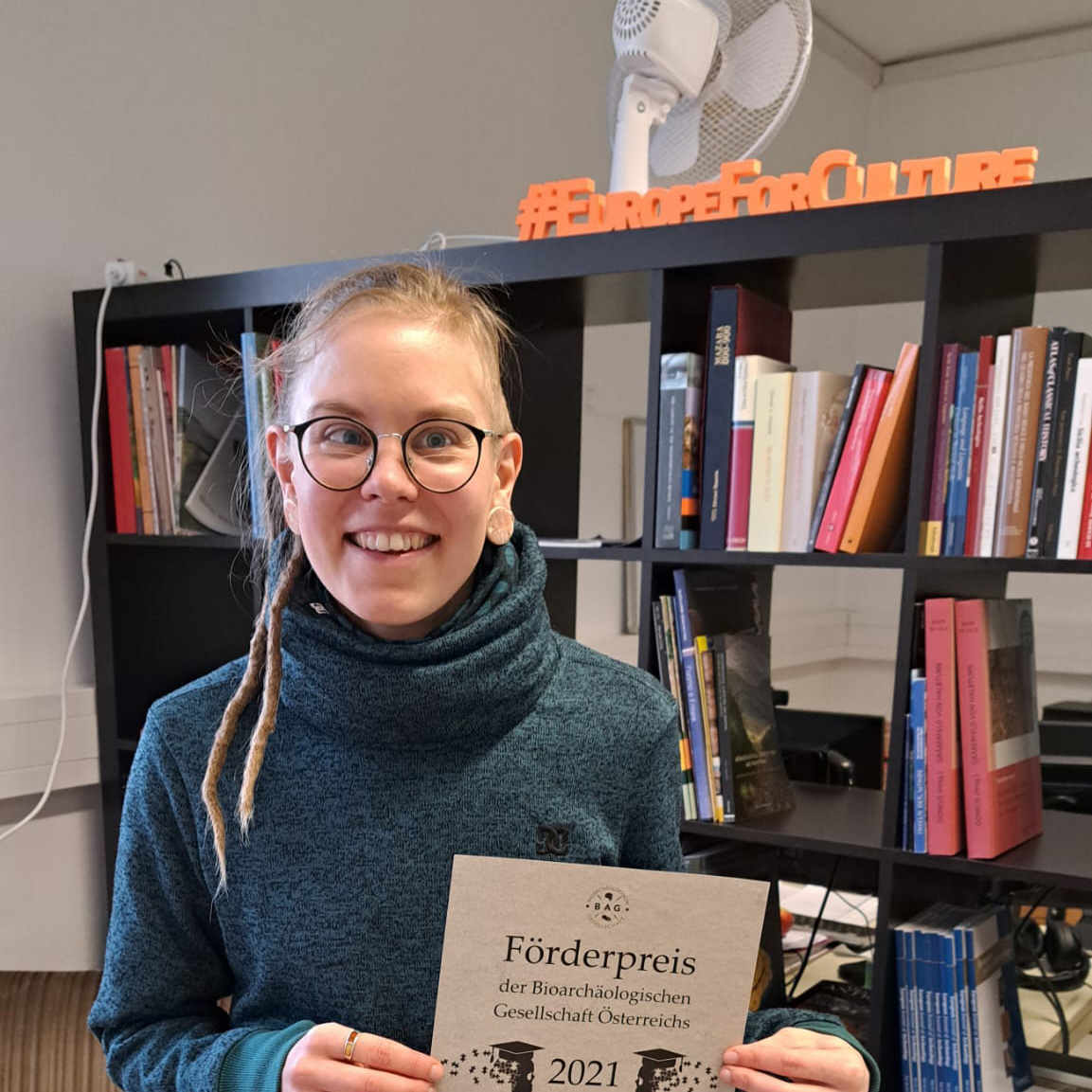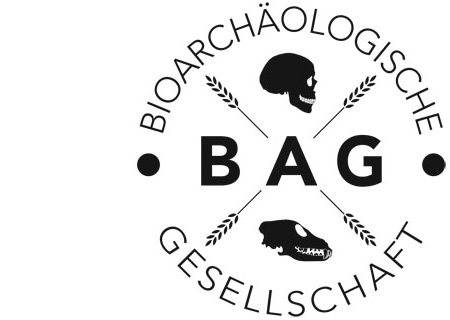
Der BAG-Förderpreis 2021 für Masterarbeiten wurde heute an Doris Jetzinger, BA, MA, Institut für Urgeschichte und Historische Archäologie (IUHA) der Universität Wien, verliehen. Der Vorstand der BAG gratuliert aufs Herzlichste!
Titel der Abschlussarbeit
Die mittelneolithischen Kinderbestattungen der Lengyel-Kultur aus Ölkam, Oberösterreich. Möglichkeiten der Analyse, Auswertung und Dokumentation von blockgeborgenen menschlichen Überresten
Abstract
| Die vorliegende Arbeit untersucht zwei Kinderbestattungen ohne Beigaben, die 1996 in Siedlungsgruben der mittelneolithischen Lengyel-Kultur bei Ölkam in Oberösterreich entdeckt wurden. Beide Bestattungen wurden vor Ort oberflächlich freigelegt, aufgrund ihres fragilen Zustandes mit Holzleim behandelt und im Block geborgen. Ziel ist es, den chronologischen und kulturellen Kontext der Bestattungen zu analysieren. Die Forschungsmethoden wurden an die Umstände der Bergung und Konservierung angepasst. Die Blöcke wurden mit Image Based Modelling 3D-dokumentiert. Eine makroskopische anthropologische Analyse wurde durchgeführt, um grundlegende anthropologische Daten zu sammeln. Von beiden Skeletten wurden Knochenproben für die 14C-Datierung mittels Beschleuniger-Massenspektrometrie entnommen, um eine chronologische Einordnung zu ermöglichen. Zur Validierung der Ergebnisse wurde die Kollagenerhaltung anhand des Verhältnisses von Kohlenstoff zu Stickstoff (C:N-Verhältnis des Kollagens) mit Hilfe der Analyse stabiler Isotope überprüft. Für beide Blöcke wurden maßstabsgetreue Orthofotos mit einem Oberflächendetail von 0,1 mm bei einem Druckmaßstab von 1:2 und 3D-Modelle mit einem 3D-Oberflächendetail zwischen 0,52 und 0,68 mm berechnet. Beide Individuen wurden als Infans II klassifiziert, mit einem Alter von 9-10 bzw. 10-11 Jahren zum Zeitpunkt des Todes. Nur eine Bestattung konnte erfolgreich 14C-datiert werden; sie stammt aus der Westlengyel-Phase Ib mit kalibrierten 14C-Altern von 4600-4490 v. Chr. (68,2 %) und 4620-4520 v. Chr. (62,7 %). Kollagen-C:N-Verhältnisse zwischen 2,9 und 3,6 weisen auf eine akzeptable Kollagenerhaltung hin, was die Zuverlässigkeit der 14C-Ergebnisse belegt. Beide Bestattungen können als typische Westlengyel-Bestattungen angesprochen werden und passen gut in den kulturellen Kontext dieser Gruppe. |
This thesis studies two child burials without grave goods discovered in 1996 in settlement pits of the Middle Neolithic Lengyel Culture near Ölkam in Upper Austria. Both burials were superficially exposed on site, treated with wood glue due to their fragile condition and recovered in the block. The aim is to analyse the chronological and cultural context of the burials. Research methods were adapted to the circumstances of recovery and conservation. The blocks were 3D-documented using Image Based Modelling. A macroscopic anthropologic analysis was conducted to collect basic anthropological data. Bone samples for 14C dating by Accelerator Mass Spectrometry were taken from both skeletons to facilitate a chronological classification. To validate the results, collagen preservation was checked by means of the carbon to nitrogen ratio (collagen C:N ratio) using stable isotope analysis. Scaled orthophotos with a surface detail of 0.1 mm at a print scale of 1:2 and 3D models with a 3D surface detail between 0.52 and 0.68 mm were computed for both blocks. Both individuals were classified as Infans II, with ages at death of 9-10 and 10-11 years, respectively. Only one burial was successfully 14C-dated; it dates to the Westlengyel phase Ib with calibrated 14C-ages of 4600-4490 BC (68.2%) and 4620-4520 BC (62.7%). Collagen C:N ratios between 2.9 to 3.6 indicate acceptable collagen preservation, which attests to the reliability of the 14C results. Both burials can be addressed as typical Westlengyel burials and fit well into the cultural context of this group. |


